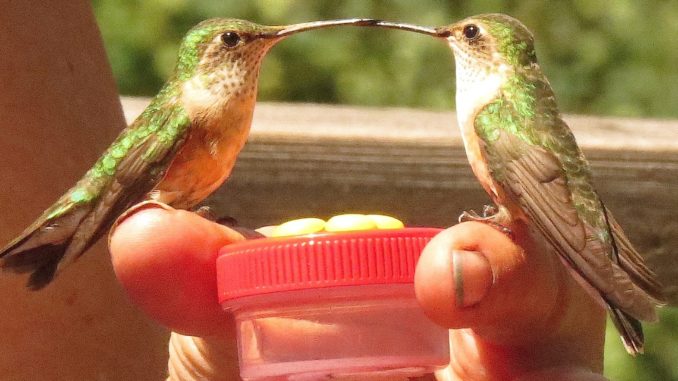
Loveland Open Lands and Trails | lovgov.org
With the return of warm weather, it’s time to welcome nesting birds back to our open spaces, trails, and backyards. These harbingers of spring need our help to raise their young safely. Here are our top 10 ways to help protect nesting birds:
- Dispose of used fishing line properly in collection tubes or trash cans. When birds use fishing line to build their nests, young birds can get injured or die when they get tangled up.
- Pick up baling twine from hay bales. Osprey (large fish-eating raptors) bring twine and other debris to their nests all season, which is dangerous to young birds and can cause injury or death. Dispose of baling twine in a covered trash can or recycle at approved locations.
- Leave nesting birds alone and give them plenty of space (300 feet or more). For a close-up view, watch our live nest cams at lovgov.org/nestcams to see osprey, barn owl, and kestrel nests.
- Don’t “decorate” natural areas or trails with artificial ornaments. These human-made materials can be hazardous to birds and other wildlife. Keep natural areas natural!
- Provide food and water such as birdseed, suet, nectar, and fresh water, which birds need for energy and raising young. DIY a simple bird feeder by covering a pinecone with peanut butter and dipping in birdseed, then hang it in your yard and watch the birds flock to it.
- Leave some twigs, leaves, and other natural materials that have fallen in your yard for birds to use for nest-building. Avoid yarn, string, human hair, and dryer lint – all can pose dangers.
- Add native plants to your landscape to provide a variety of wild food for birds including fruit, seeds, nectar, and insects.
- Avoid using pesticides in your yard and leave the bugs for birds to eat – they help provide natural pest control.
- Keep cats indoors or attach bells or brightly colored collar covers to warn birds of a cat’s approach.
- Hang strings or attach decals to large windows to make glass more visible to birds and turn off or minimize outdoor lighting. All can help prevent bird collisions.
Support Northern Colorado Journalism
Show your support for North Forty News by helping us produce more content. It's a kind and simple gesture that will help us continue to bring more content to you.
BONUS - Donors get a link in their receipt to sign up for our once-per-week instant text messaging alert. Get your e-copy of North Forty News the moment it is released!
Click to Donate
